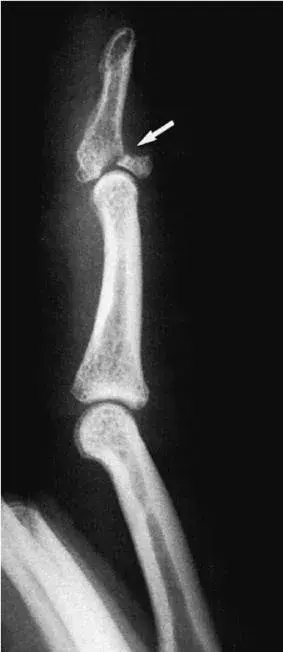Most Missed Question in EM This Week: Tension Pneumothorax
A 46-year-old man presents to your office for an annual physical examination. He works as an accountant in a local business and regularly exercises, jogging almost 15 miles/week.
A 46-year-old man presents to your office for an annual physical examination. He works as an accountant in a local business and regularly exercises, jogging almost 15 miles/week.
His vitals are: heart rate 88 beats/minute, respiratory rate 18 breaths/minute, blood pressure 138/82 mm Hg, and temperature 98.4 °F. His current body mass index is 24.2 kg/m2.
His family history does not include diabetes or heart disease. He has no previous record of testing for diabetes mellitus.
According to the American Diabetes Association guidance, which of the following is the most appropriate testing for diabetes mellitus for this patient?
Answers:
- No testing is recommended because of his age.
- No testing is recommended because of lack of risk factors and negative family history.
- Testing should be performed using glycated hemoglobin, fasting plasma glucose, or a 2-hour 75 g oral glucose tolerance test.
- Testing should be performed using random plasma glucose.
- Testing should be performed using urine dipstick to screen for glycosuria, ketones, and proteinuria.
The correct answer is #3 - Testing should be performed using glycated hemoglobin, fasting plasma glucose, or a 2-hour 75 g oral glucose tolerance test. The ADA explicitly states that all asymptomatic adults should begin routine screening at age 35, regardless of other risk factors. This is a guideline knowledge question.
Section 2 of the 2025 Standards PDF from the ADA, https://www.wafp.org/assets/files/2025_ADA_Updates_All_Sections_95.pdf
This type of question about screening and management guidelines are extremely common on the exam. Particularly in Preventive Care, but across all five sections of the new exam blueprint (well, not so many in Emergent & Urgent Care).
Why This Question Is Often Missed
- Overlooking universal screening recommendations: Learners may think that absence of risk factors or normal BMI excludes the need for diabetes testing, forgetting that the ADA recommends routine screening starting at age 35 regardless of risk profile.
- Confusion about test modalities: Some may recall that random glucose or urine dipstick can detect hyperglycemia but fail to recognize that these are not endorsed as screening tests in asymptomatic adults.
What the Distractors Indicate
| Option | What It Tests / Implies | Why It’s Wrong Here |
|---|---|---|
| No testing is recommended because of his age. | Misapplication of age cutoff (e.g., believing screening starts later than 46) | The ADA recommends beginning routine screening at age 35, so waiting longer is inappropriate. |
| No testing is recommended because of lack of risk factors and negative family history. | Belief that only high‐risk individuals need testing | Screening is age‑based (≥35), not solely risk‑factor–based; family history isn’t required to trigger testing. |
| Testing should be performed using glycated hemoglobin, fasting plasma glucose, or a 2‑hour 75 g oral glucose tolerance test. (Correct) | Knowledge of ADA‑endorsed screening tests | — |
| Testing should be performed using random plasma glucose. | Confusion with inpatient or symptomatic testing | Random glucose is used for diagnosing symptomatic hyperglycemia, not routine asymptomatic screening. |
| Testing should be performed using urine dipstick to screen for glycosuria, ketones, and proteinuria. | Misbelief that urine studies are adequate for diabetes screening | Urine dipstick lacks sensitivity and specificity and is not recommended for screening. |
High-Yield Pearl
All asymptomatic adults ≥35 years should be screened for diabetes every 3 years with A1C, fasting glucose, or OGTT.
Core Learning Objectives for Emergency Medicine
- Understand the age‑based screening criteria for type 2 diabetes in asymptomatic adults according to ADA guidelines.
- Distinguish between recommended screening tests (A1C, FPG, OGTT) and non‑recommended methods (random glucose, urine dipstick).
The “Test Trick” at Play
This question traps learners by presenting plausible but non‑guideline methods (random glucose, urine dipstick) and by emphasizing absence of risk factors or family history, leading them to disregard the age‑based screening recommendation. Recognizing that ADA screening starts at age 35 regardless of risk profile is key.
Additional EM Exam Practice Questions and Remediation
Emergency Medicine Exam Practice Question 1
A 38‑year‑old woman with no family history of diabetes and BMI 22 kg/m² comes in for a routine check. Which screening approach is appropriate?
A. No screening needed until age 45
B. Screen with A1C, fasting glucose, or OGTT
C. Screen with random plasma glucose
D. Screen with urine dipstick
Answer and Remediation
- If you chose B: Correct response! The ADA recommends screening all adults ≥35 years every 3 years with A1C, FPG, or OGTT.
- If you chose any incorrect option: Review:
- A: Screening age is 35, not 45.
- C: Random glucose is for symptomatic or inpatient evaluation.
- D: Urine dipstick is neither sensitive nor specific for screening.
Emergency Medicine Exam Practice Question 2
A 30-year-old woman with BMI 22 kg/m², no family history of diabetes, and no other risk factors comes in for a routine annual exam. Which of the following is the most appropriate next step?
A. No diabetes screening is recommended until age 35 in asymptomatic adults without risk factors
B. Screen with A1C
C. Screen with fasting plasma glucose
D. Screen with 2-hour 75 g OGTT
Answer and Remediation
- If you chose A: Correct response! In asymptomatic adults under age 35 without risk factors, ADA guidelines do not recommend routine diabetes screening until age 35.
- If you chose any incorrect option: Review:
- B, C, D: Although A1C, FPG, and OGTT are ADA-approved screening tests, they’re only indicated starting at age 35 in low-risk asymptomatic adults.
Emergency Medicine Exam Practice Question 3
A 34‑year‑old woman with PCOS (a risk factor) wants diabetes screening. Appropriate test?
A. No screening needed until age 35
B. Screen with A1C, fasting glucose, or OGTT
C. Screen with urine dipstick
D. Screen with random plasma glucose
Answer and Remediation
- If you chose B: Correct response! Although she’s under 35, PCOS is a risk condition warranting earlier screening with A1C, FPG, or OGTT.
- If you chose any incorrect option: Review:
- A: Risk factors like PCOS lower the age threshold—screening starts earlier.
- C: Urine dipstick is not an approved screening tool.
- D: Random glucose is inappropriate for routine asymptomatic screening.
Emergency Medicine Exam Practice Question 4
A 47‑year‑old man with well‑controlled hypertension but no other risk factors asks about diabetes screening. Next step?
A. Delay testing until he gains weight
B. Perform a 2‑hour 75 g OGTT
C. Screen with A1C, fasting glucose, or OGTT
D. Screen with random plasma glucose
Answer and Remediation
- If you chose C: Correct response! Age ≥35 mandates periodic screening with any ADA‑approved test.
- If you chose any incorrect option: Review:
- A: Weight gain isn’t required to justify screening.
- B: OGTT is one option, but listing only OGTT ignores fasting glucose and A1C—testing still indicated.
- D: Random glucose isn’t recommended for asymptomatic screening.
Emergency Medicine Exam Practice Question 5
Which of the following is NOT an ADA-endorsed screening modality for diabetes in asymptomatic adults?
A. A1C
B. Fasting plasma glucose
C. Random plasma glucose
D. 2-hour 75 g OGTT
Answer and Remediation
- If you chose C: Correct response! Random plasma glucose is used for evaluating symptomatic hyperglycemia, not for routine asymptomatic screening.
- If you chose any incorrect option: Review:
- A, B, D: A1C, fasting plasma glucose, and OGTT are all endorsed by the ADA for routine screening in asymptomatic adults ≥35 years.
Mini Case Discussion Prompt
Compare screening strategies for diabetes in asymptomatic adults under age 35 who possess multiple metabolic risk factors versus those over age 35 without any risk factors. What are the trade‑offs and clinical rationales in each scenario?
This question appears in Med-Challenger Emergency Medicine Review with CME
Try for free and save. Ace your exams and meet your CME/MOC requirements for just $35 a month!
No matter your program, no matter the size, Med-Challenger for Groups and Institutions can better prepare your program or group, fulfill industry requirements, and increase test scores.








